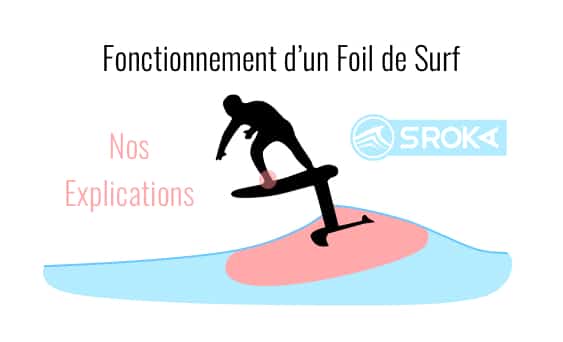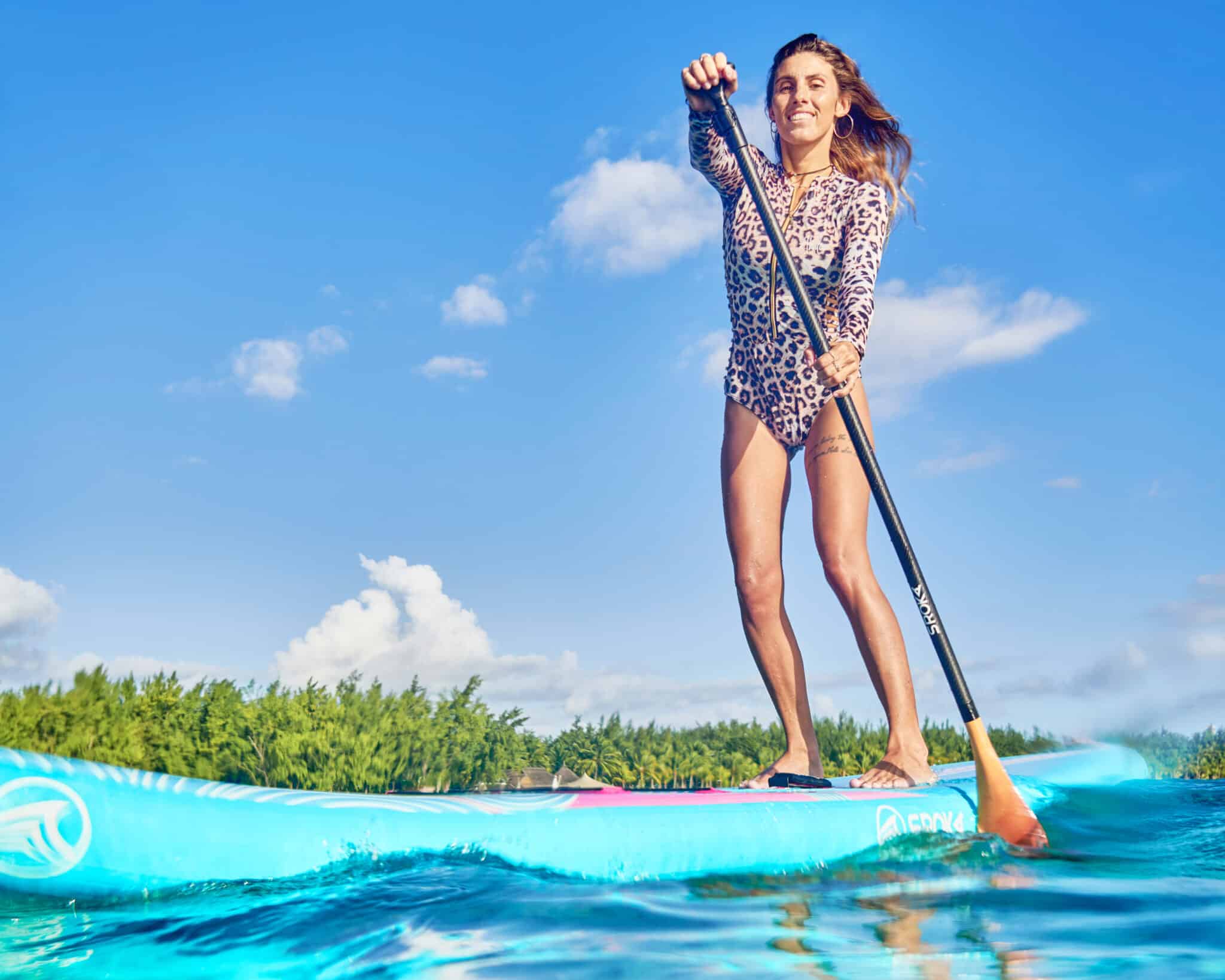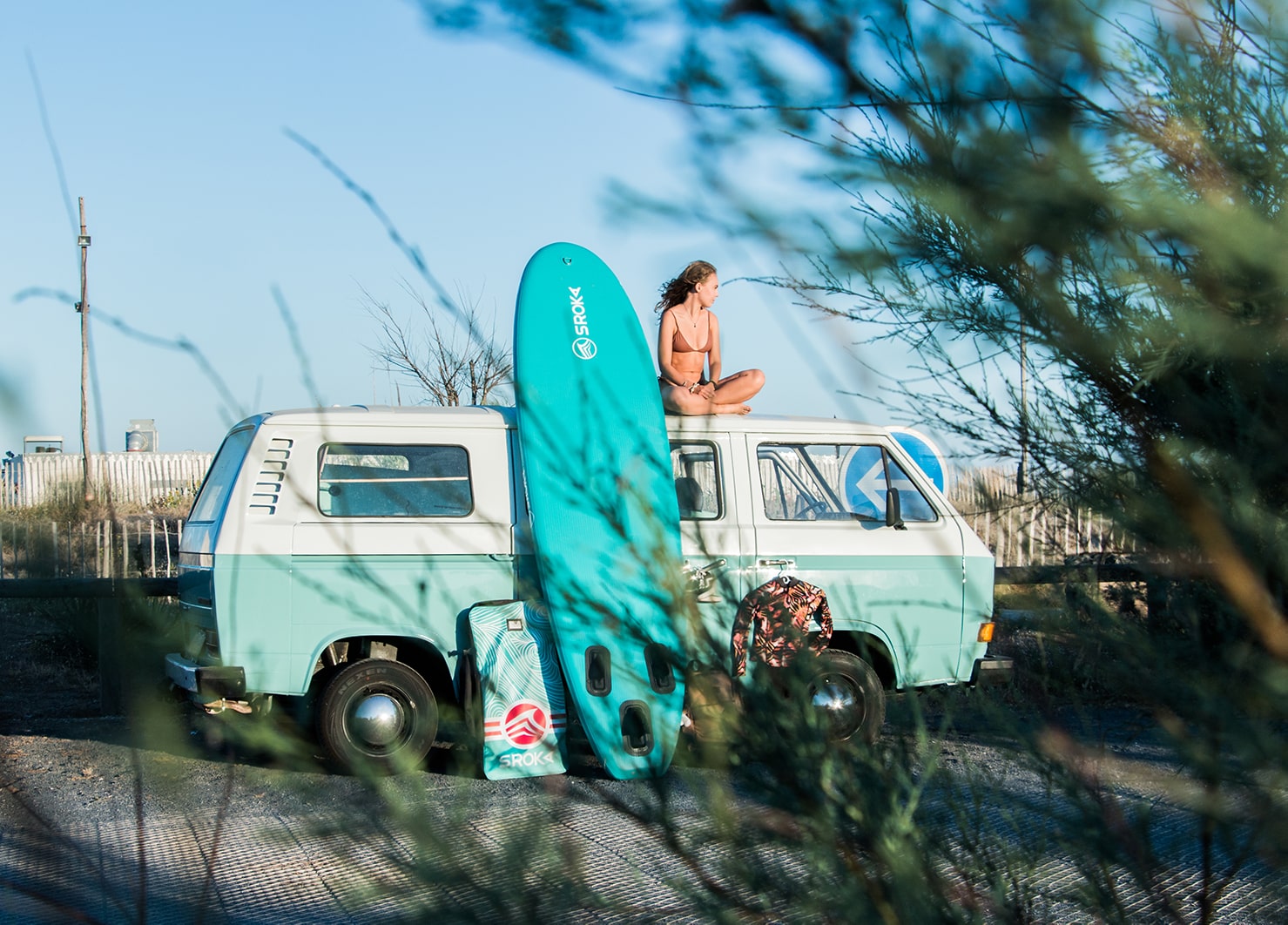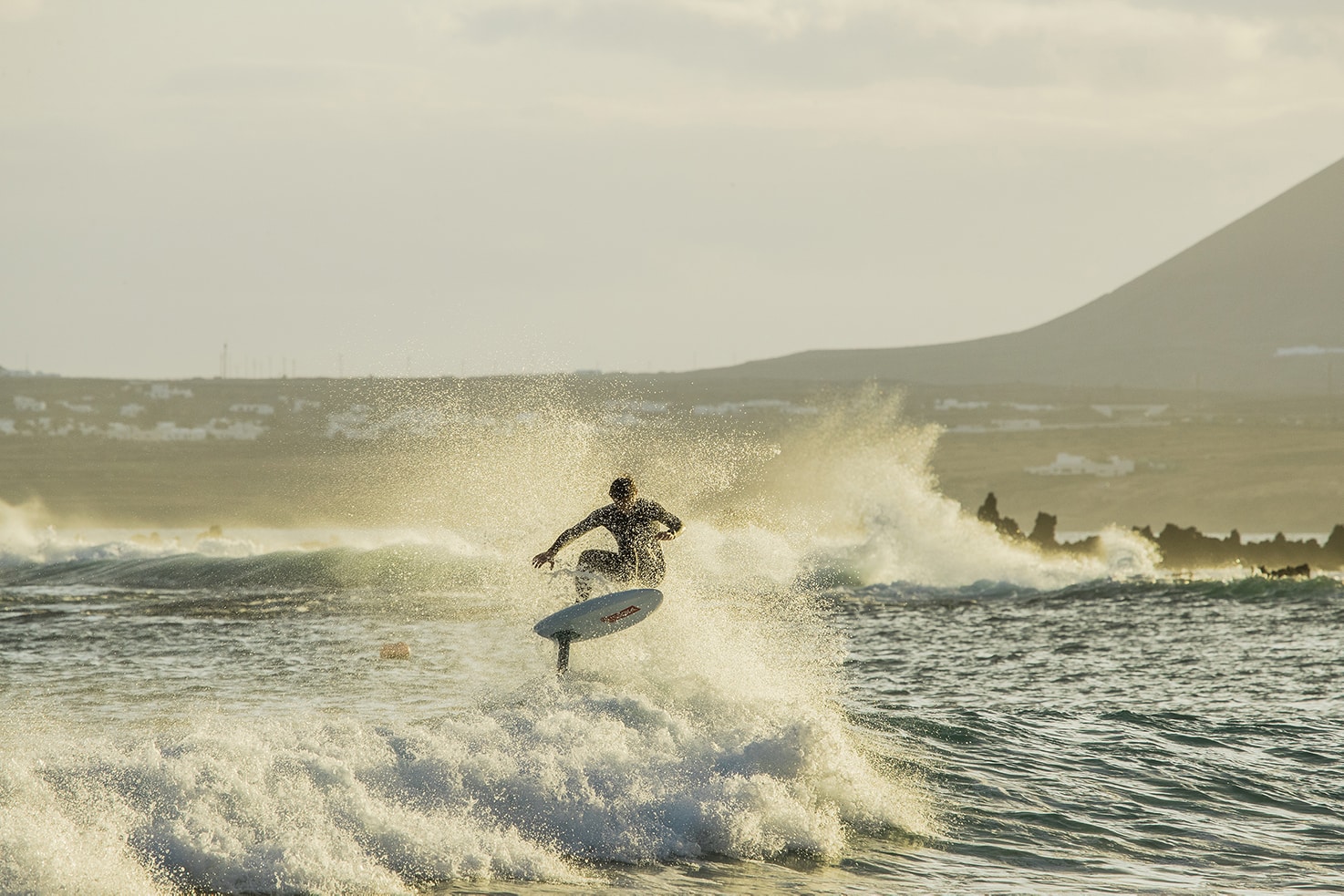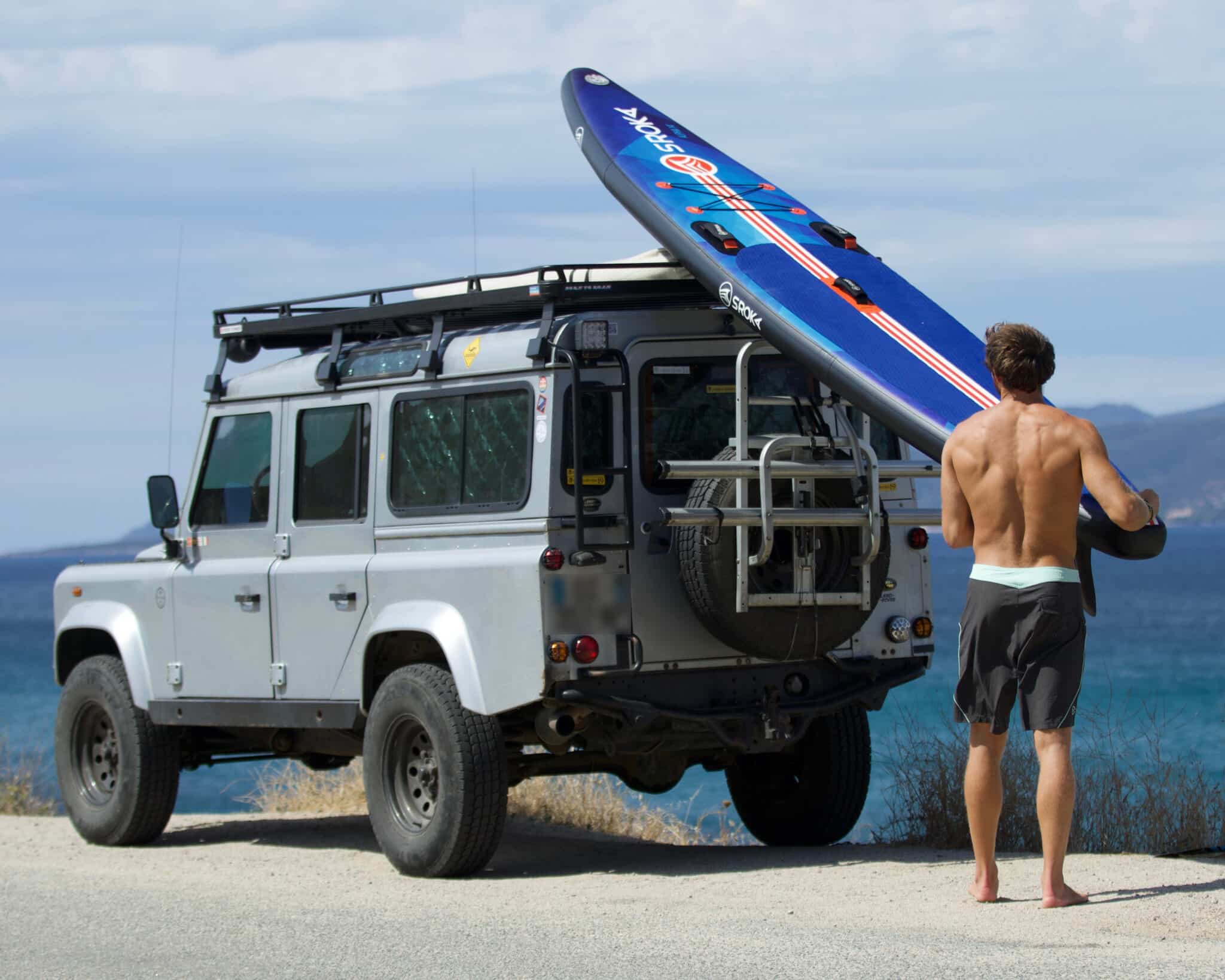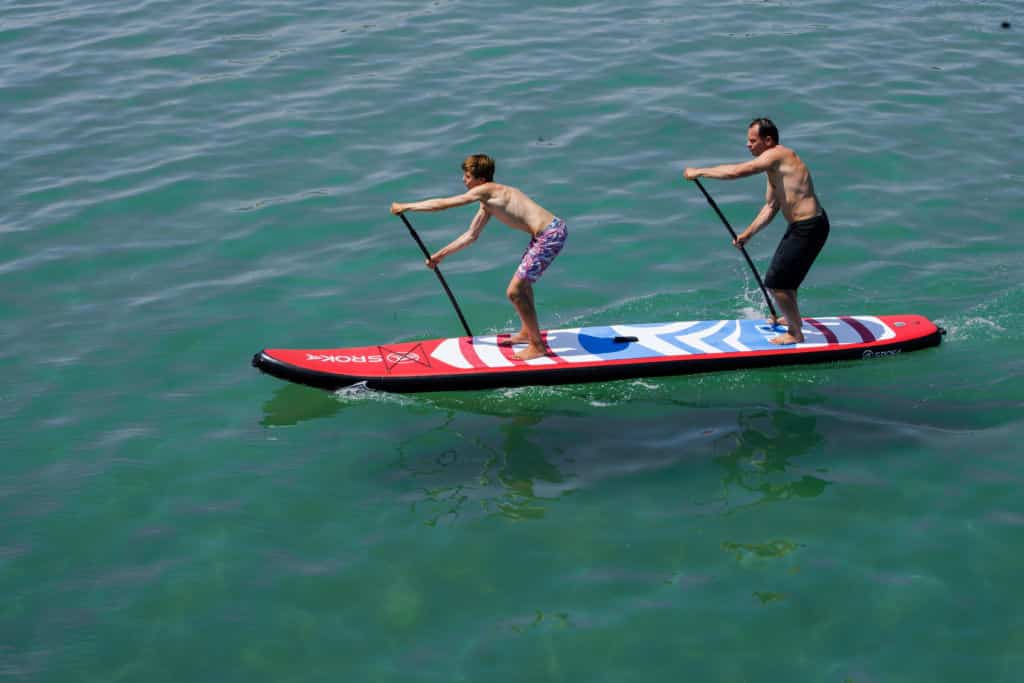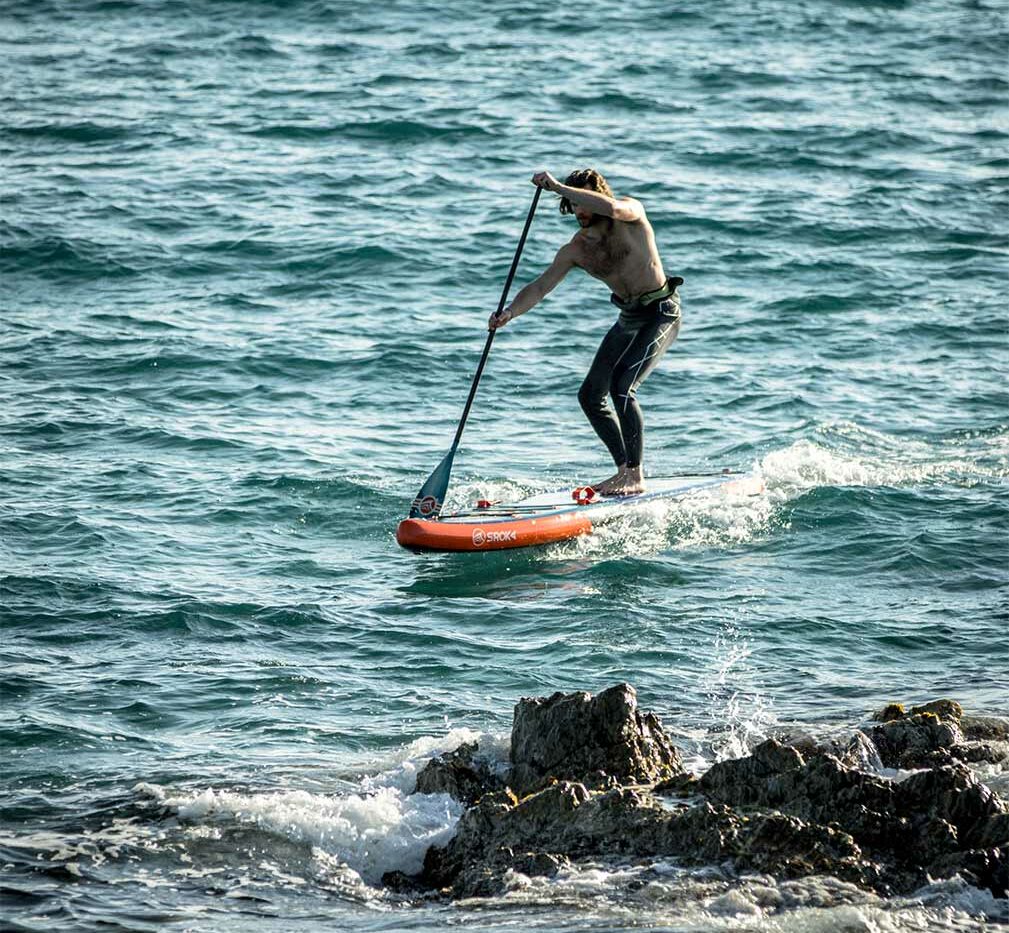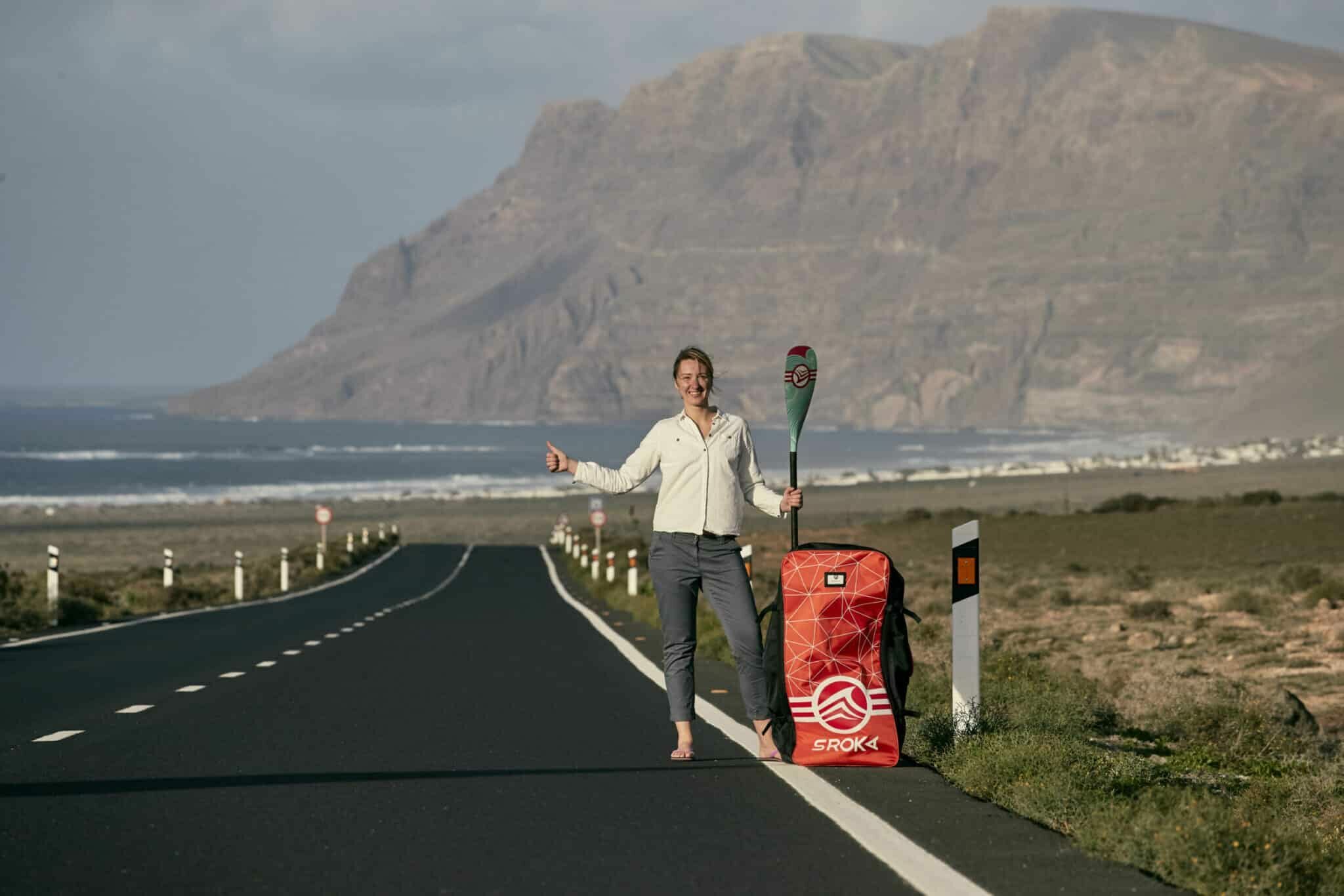 LE MAGAZINE
LE MAGAZINEHow to jump in Wing foil – level 1

Once they’ve familiarized themselves with the thrill of flying in Wing FoilOnce you’ve got the hang gliding feel, you’ll want to exploit the sport’s full potential. To satisfy your desire for freeride navigation and tricks, we create high-performance, easy-to-handlewing foil products and packages. We take care to ensure that they are upgradeable, to follow you from your beginnings, right through to your desire for freeride and performance. Sharing our passion for foil goes far beyond the creation of products: we make sure we give you the best advice for having fun on the water. Do you want to take your skills to the next level and send out your first jumps? Here are our recommendations on“How to jump well on Wing Foil “, to help you push the limits of this sport.
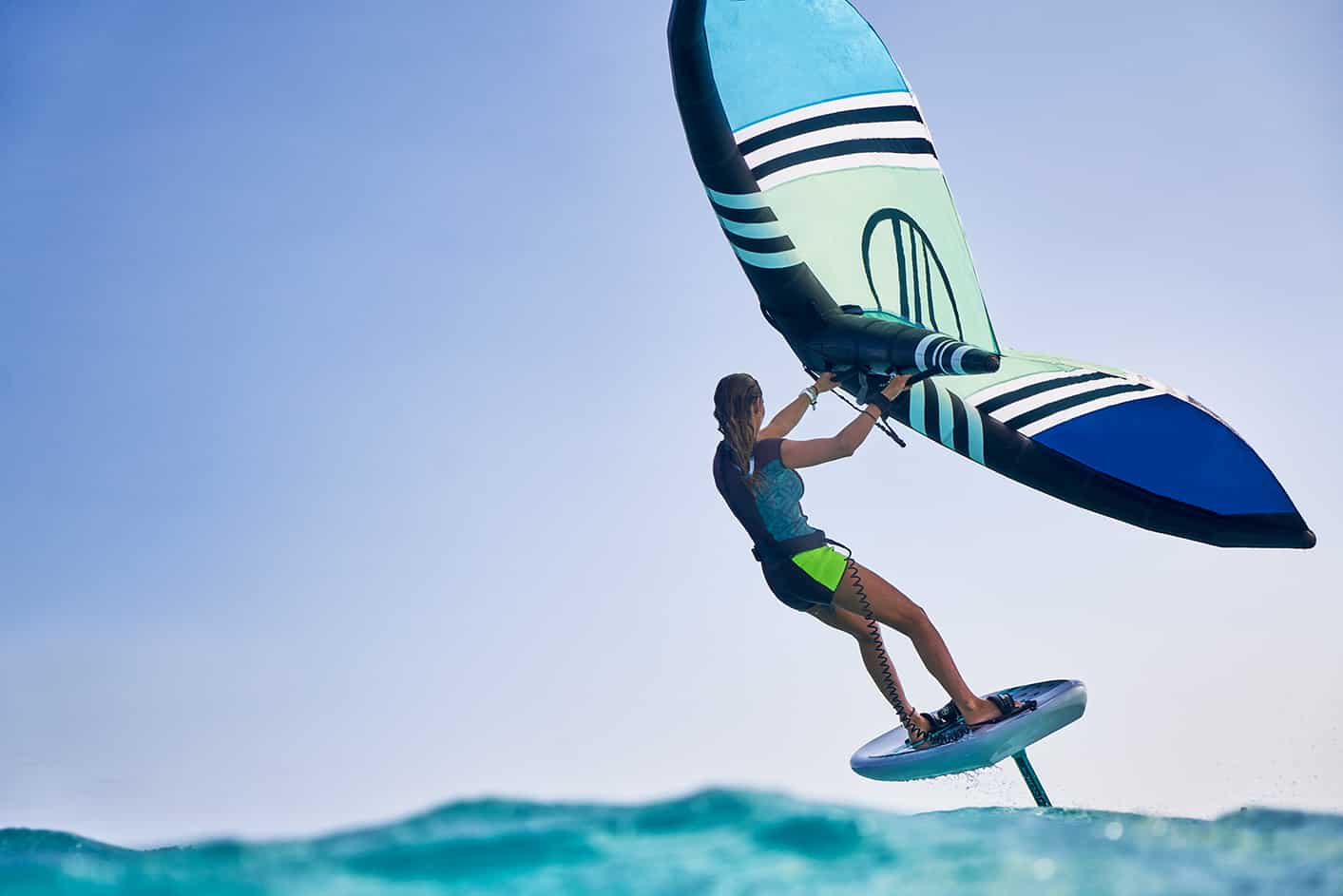
7 tips for jumping Wing Foil (Level 1)
SPOT AND CONDITIONS
Unlike some foil disciplines, WingFoiling does not require powerful waves. It’s perfectly possible to start out on flat water. Ideally, however, you should start out on a fairly windy session (at least 20 knots), with enough chop and/or swell to help you get the jump going. And don’t forget to choose a spot with a deep enough bottom. You could damage your foil on landing or in the event of a fall.
EQUIPMENT
When you start jumping in a WingFoil, safety is your top priority. Equip yourself with protection, helmet and impact vest, along with specific wingfoil accessories.
For jumping, a slightly smaller board will be ideal, thanks to its greater responsivenessand smaller footprint. These boards are generally equipped with foot-strap insertsfor jumpering. The straps will give you stability in flight, control and prevent you from losing the board in the air. A board that’s too big won’t be suitable for jumping. We recommend a board of 5’5 or less (depending on size).
For more information on the use of straps or strapless in Wing Foil, please read this dedicated article. Finally, for maximum speed and optimum jump, we recommend a fastfoil and a relatively small front fin (less than 1500 cm2).
See our SROKA quiver for jumpering on Wing Foil at the end of the article.
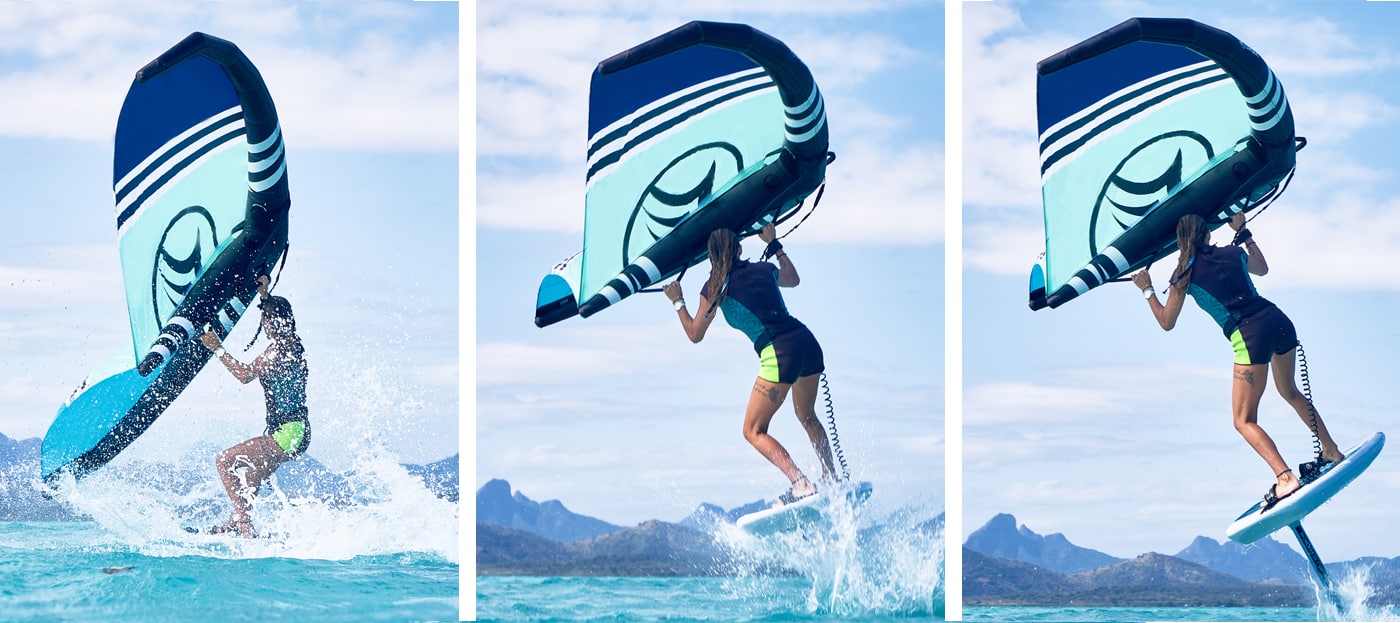
PREPARATION
Well balanced on your board,crosswind, take maximum speed by loading with your wing and your foil (i.e. being notched as much as possible on your board by pressing on your heels and pulling on your toes). Take maximum power from your wing to accelerate. To do this, positionthe sail as vertically as possible to catch as much wind as possible. Position yourself on your preferred side to start jumping.
IMPULSION
Spot a section (a chop or small wave) facing you.
As you reach the top of your wave, flex your legs more and more (three to four meters beforehand) to prepare for the impulse and get the maximum power out of them (keep crunching while pressing hard on your heels). Your gaze should be focused on the impact zone (the area where the jump is triggered). As you approach the top of the wave, come up slightly into the wind while continuing to exert maximum power.
Bendyour legs, squat down and, just before impact (take-off), add pressure on your front leg to bring the foil down and then back up again. This will generate additional lift on take-off. (you should feel the board nosedive just before impact). Make sure that the front of the board does not touch the water, as this could slow you down and throw you off balance. This step is very important in order to maximize the power transmitted to foil at the moment of impact, and thus increase your chances of climbing as high as possible.
DECOLLAGE
At this point, move slightly closer to the wind axis (loft) and continue to gain maximum speed. As you take off, put your weight on the back leg to lift the foil. Relax your legs by pushing on them to jump as high as possible. You are now jumpering. You can now position the wing over your head by flexing your arms (umbrella position).

THE FLIGHT
As soon as you take off, hold your wing above you like a parachute. Aim it so you can glide as high as possible. Pay attention to your position: don’t lean backwards or forwards, and stay as close together as possible to better control your flight and descent. In the event of total loss of control, don’t hesitate to disengage from the board to avoid hurting yourself.
DESCENT AND LANDING
This is the second part of the jump. Stay tucked in while keeping the nose of the board pointed skyward, so that you land on the back of the board. Keep your wing as an umbrella until you land. Extend your legs a little before touchdown to cushion the landing in the water, and flex them again to cushion the landing when the foil touches down in the water. If your landing is successful, the foil will go straight back into the air once the board is out of the water.
For a smooth landing, never land flat with your full weight. This could cause you to fall, injure yourself and break your board. So never land flat, preferring to land on the back of the board.
Learning to jump requires time and repetition. So don’t hesitate to practice.
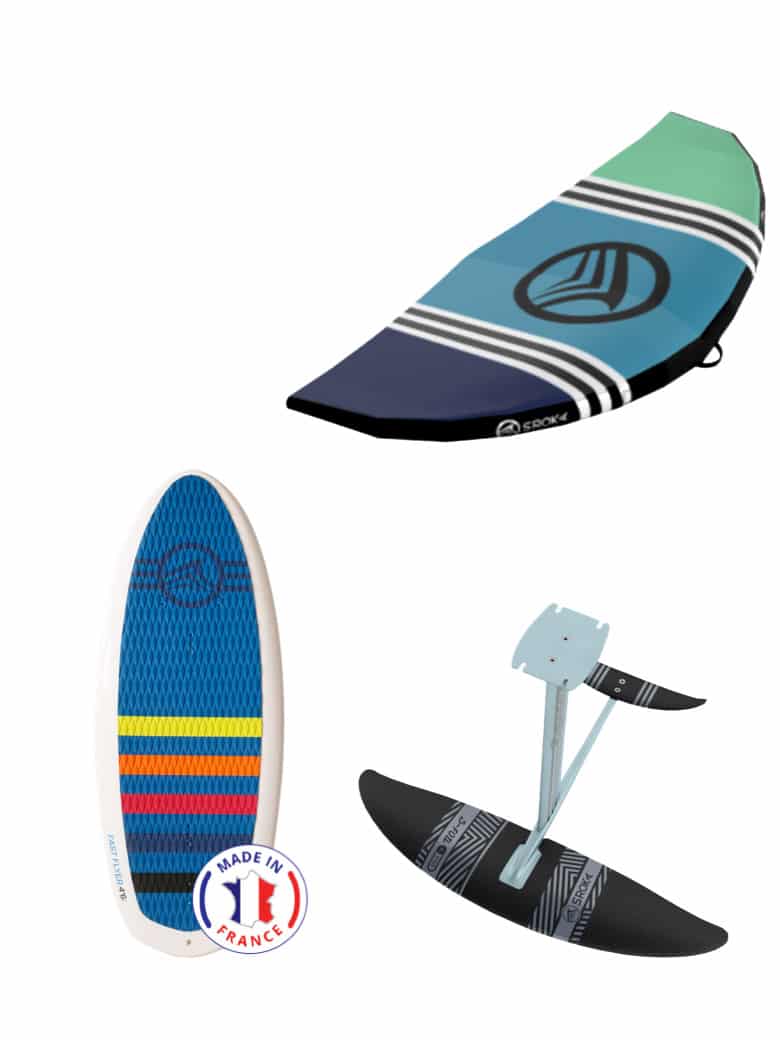
Our SROKA quiver for jumpering on Wing Foil
The Wingfoil Performance 4’6 Fast Flyer Pack has been designed for the most experienced riders who want to take their jumps, curves and freestyle tricks to the next level. The combination of the Fast Flyer 4’6 (with straps inserts), lightweight and highly maneuverable, with the Wing Sroka 2021 and the S-Foil 1750 will boost your performance and allow you to exploit the full potential of Wing Foil .
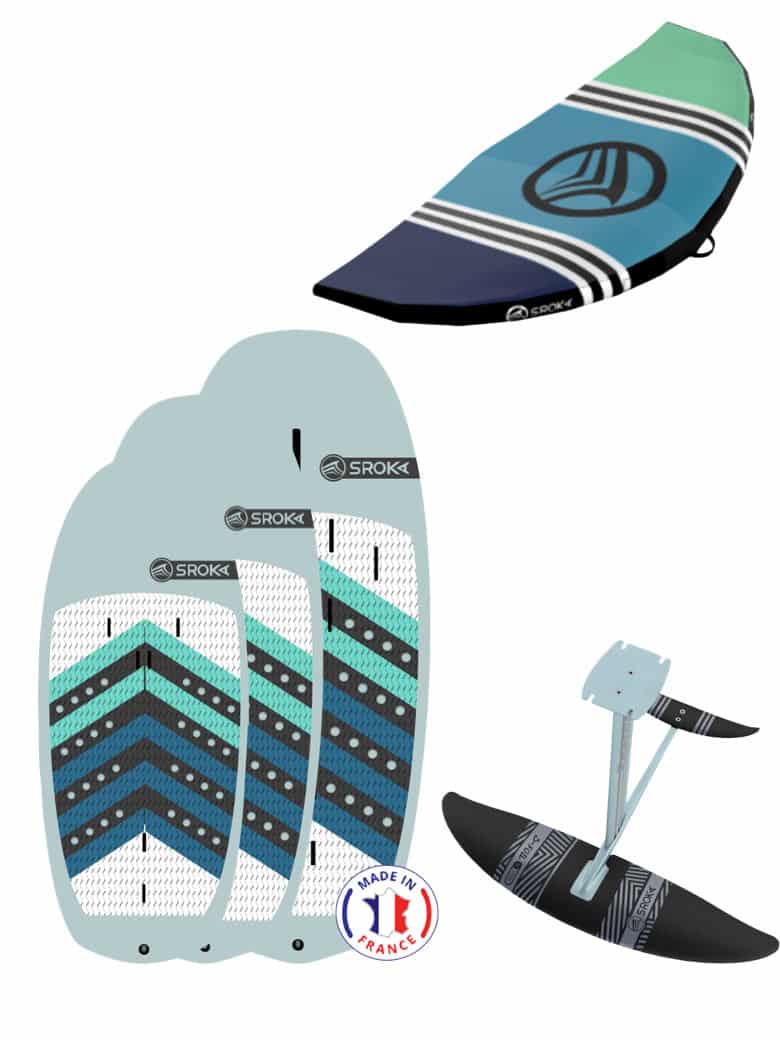
This rigid pack is the perfect quiver for riders new to freeriding or looking for a little more volume. The Sky Rider 5’5, with straps inserts, has been designed for performance Wing Foil . Like the Fast Flyer, all manufacturing steps are 100% Made in Bretagne. We are once again including our Wing Sroka 2021 and the S-Foil 1750, a guarantee of quality, versatility and speed.
In a nutshell:
- If you’re just starting out, don’t forget your safety gear.
- Choose a spot with choppy water
- Set off in your preferred stance and pick up speed by loading your wing and your foil
- Locate a section to lean on, bend your legs to push down on it. foil
- Extend the legs to create momentum, while edging the wing as far as possible with the arm stretched above the head.
- Stay well above the board during flight and descent
- Dampen by stretching your legs and pushing the front fin in first.
- Keep the wing tucked above your head throughout the landing.
Advanced tips/pros tips :
- Take a look at the determined landing zone
- Take your time and go slowly
 Le Magazine
Le Magazine



